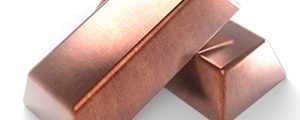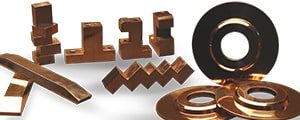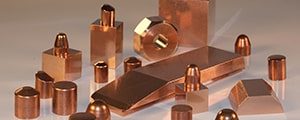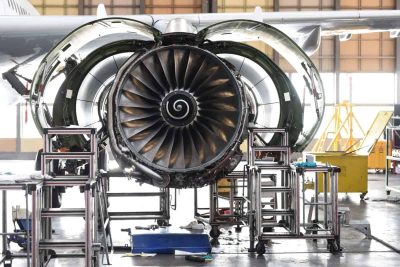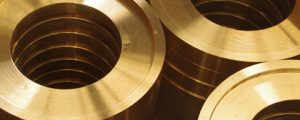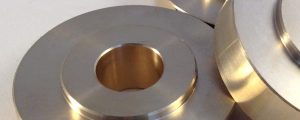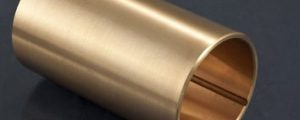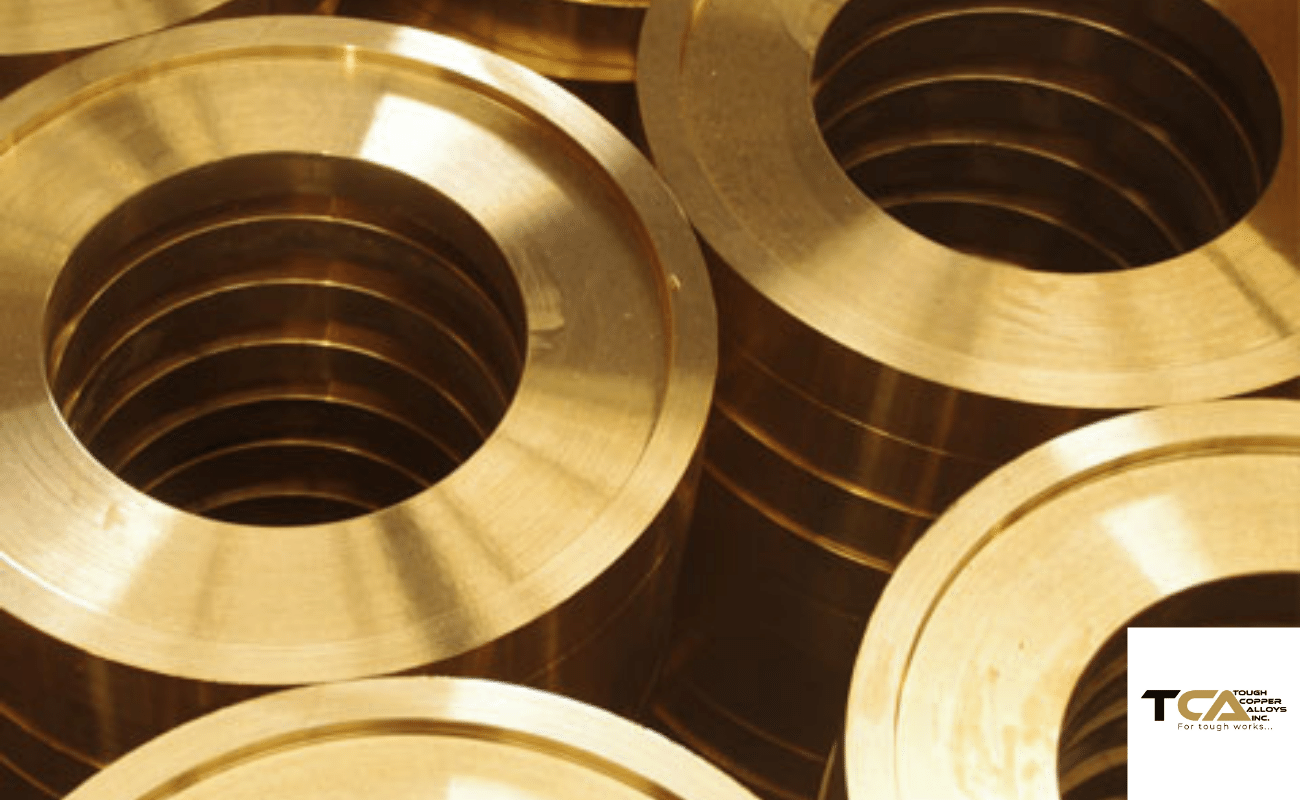What is “C63000” Material?
C63000, also known as nickel aluminum bronze, is a high-strength copper alloy that contains nickel, aluminum, iron, and manganese. This material offers a unique combination of mechanical and physical properties that make it suitable for a wide range of applications in various industries.
One of the main advantages of C63000 is its high strength. It has a higher tensile and yield strength compared to many other copper alloys, making it suitable for applications that require high mechanical strength. Additionally, C63000 offers good wear resistance and is able to withstand harsh environments such as seawater and other corrosive environments. This makes it a popular choice in marine applications such as propeller shafts, valve components, and marine hardware.
Another notable characteristic of C63000 is its high thermal conductivity. This makes it an ideal material for applications that require efficient heat transfer. For instance, it is commonly used in heat exchangers, cooling systems, and other applications that require effective thermal management.
C63000 can be fabricated using various processes such as casting, forging, and machining. It is also known for its good weldability and brazing properties, which makes it easy to work with and join.
This copper alloy is specified in various industry standards such as ASTM B150 and SAE J461. These standards define the chemical composition, mechanical properties, and other requirements for C63000. In addition, C63000 is available in different forms such as bars, plates, sheets, and tubes, which provides a wide range of options for manufacturers and designers.
In summary, C63000 is a high-strength copper alloy that offers excellent mechanical and physical properties. Its unique combination of strength, wear resistance, corrosion resistance, and thermal conductivity make it a versatile material that is widely used in various industries such as marine, aerospace, and oil and gas. Its availability in different forms and its ease of fabrication make it a popular choice for manufacturers and designers alike.
Application Areas & Industries
C63000 is a highly versatile copper-nickel alloy that is widely used in a variety of industries due to its exceptional strength, corrosion resistance, and durability. This material is often chosen for its excellent resistance to stress corrosion cracking and its ability to maintain its mechanical properties at elevated temperatures.
Some of the key industries where C63000 is commonly used include:
- Marine: C63000’s high corrosion resistance makes it an ideal choice for marine applications such as propellers, fasteners, and seawater valves. The material’s strength and durability also make it suitable for use in shipbuilding and offshore oil and gas platforms.
- Aerospace: C63000’s exceptional strength and resistance to stress corrosion cracking make it an ideal material for aerospace applications such as landing gear components, fuel and hydraulic system fittings, and structural components.
- Oil and gas: C63000’s high resistance to corrosion and erosion make it a popular choice for use in oil and gas applications such as tubing, heat exchangers, and valves. Its exceptional strength and durability also make it suitable for use in drilling equipment and offshore platforms.
- Automotive: C63000’s high strength and excellent wear resistance make it a popular choice for automotive applications such as bearings, bushings, and gears. The material’s corrosion resistance also makes it suitable for use in engine components and fuel systems.
- Industrial manufacturing: C63000’s unique combination of properties makes it well-suited for use in a wide range of industrial manufacturing applications, including hydraulic and pneumatic systems, bearings, and bushings. The material’s high strength and excellent wear resistance make it suitable for use in heavy-duty manufacturing processes, where components are exposed to high levels of stress and wear.
In summary, C63000 is a highly versatile copper-nickel alloy that is used in a wide range of industries and applications. Its exceptional strength, corrosion resistance, and durability make it a popular choice for manufacturing components that require high performance and reliability.
Common Fabrication Processes
C63000 is a highly versatile copper-nickel-zinc alloy that can be easily fabricated using a range of common processes. Here are some of the most common fabrication processes used with C63000:
- Casting: C63000 can be cast into complex shapes using both sand and permanent mold casting methods. This makes it a popular choice for manufacturing components such as pump bodies, valve bodies, and other large, intricate parts.
- Forging: C63000 can be forged into a wide range of shapes, making it well-suited for use in components that require high strength and durability. Common forging applications for C63000 include gears, bearings, and other components used in heavy-duty machinery.
- Extrusion: C63000 can be easily extruded into a variety of shapes and sizes, making it a popular choice for use in architectural applications such as door frames and window frames. Its excellent corrosion resistance also makes it a good choice for use in marine and other outdoor applications.
- Machining: C63000 is highly machinable and can be easily cut, drilled, and shaped using common machining techniques. This makes it a popular choice for use in components such as shafts, gears, and other parts that require precise machining.
- Welding: C63000 can be welded using a variety of common welding techniques, including gas tungsten arc welding (GTAW) and gas metal arc welding (GMAW). This makes it a popular choice for use in components that require strong, durable welds.
Overall, C63000 is a highly versatile material that can be easily fabricated using a range of common processes. Its unique combination of properties makes it well-suited for use in a wide range of applications and industries, including marine, aerospace, automotive, and architectural applications.
Chemical Composition
C63000 is a copper-nickel-aluminum alloy that is known for its excellent strength and corrosion resistance. Its chemical composition plays a key role in determining its mechanical and physical properties. The table below shows the typical chemical composition of C63000.
| Element | Composition (%) |
|---|---|
| Copper | 77.0 – 79.0 |
| Nickel | 4.5 – 5.5 |
| Aluminum | 3.5 – 4.5 |
| Iron | 3.0 – 4.0 |
| Manganese | 2.0 – 3.0 |
| Silicon | 1.0 – 1.5 |
| Lead | 0.05 max |
| Zinc | 0.05 max |
| Phosphorus | 0.03 max |
| Sulfur | 0.06 max |
| Total Impurities | 0.5 max |
As seen in the table, copper is the most abundant element in C63000, making up around 77-79% of its composition. Nickel and aluminum are the next most abundant elements, followed by iron, manganese, and silicon. The alloy also contains trace amounts of lead, zinc, phosphorus, and sulfur.
The specific chemical composition of C63000 can vary depending on the manufacturer and the specific application it will be used for. However, the overall composition is generally consistent across all manufacturers and meets the requirements set forth by various industry standards.
The unique chemical composition of C63000 gives it excellent strength, corrosion resistance, and machinability. It is commonly used in a variety of industries, including marine, aerospace, and automotive, for applications that require high strength, corrosion resistance, and the ability to withstand heavy loads and frictional forces.
Physical Properties
C63000 is a high-strength copper-nickel alloy that possesses a unique combination of physical properties. Its excellent mechanical and physical properties make it a popular choice for various applications in different industries. Here are some of the physical properties of C63000:
Density: The density of C63000 is approximately 8.94 g/cm3. This high density makes it an ideal material for applications where weight is a concern.
Melting Point: C63000 has a melting point of around 1093°C. This high melting point allows it to withstand high temperatures and makes it ideal for use in high-temperature applications.
Thermal Conductivity: C63000 has excellent thermal conductivity, making it an ideal material for heat exchangers and other applications where efficient heat transfer is necessary.
Electrical Conductivity: C63000 has excellent electrical conductivity, making it ideal for electrical and electronic applications.
Corrosion Resistance: C63000 has excellent resistance to corrosion, making it ideal for use in harsh environments such as marine and industrial applications.
Overall, the physical properties of C63000 make it a versatile material that can be used in various applications across different industries. Its high strength, excellent thermal and electrical conductivity, and resistance to corrosion make it an ideal choice for manufacturing components that require high performance and durability.
Fabrication Properties
C63000, also known as nickel-aluminum bronze, has excellent fabrication properties that make it a popular choice for many industrial applications. It is a versatile material that can be easily shaped and formed using a variety of fabrication techniques. Here are some of the most common fabrication properties of C63000:
- Machinability: C63000 has good machinability properties and can be easily turned, milled, drilled, and bored using standard machining techniques. It can also be easily tapped and threaded, making it an ideal material for manufacturing complex parts and components.
- Weldability: C63000 can be welded using a variety of welding techniques, including gas tungsten arc welding (GTAW), gas metal arc welding (GMAW), and resistance welding. However, it is important to ensure that the welding process is performed in a well-ventilated area to avoid the release of toxic fumes.
- Brazing and soldering: C63000 can be brazed and soldered using standard techniques. However, it is important to use a flux that is specifically designed for use with bronze alloys to ensure proper bonding.
- Formability: C63000 has good formability properties and can be easily formed into complex shapes using standard forming techniques such as bending, rolling, and stamping.
Overall, C63000 is a highly versatile material with excellent fabrication properties that make it a popular choice for many industrial applications. Its unique combination of properties makes it an ideal material for manufacturing complex parts and components that require good machinability, weldability, and formability.
Applicable Specifications
C63000, also known as nickel aluminum bronze, is a popular alloy used in a variety of applications. To ensure the proper use of C63000, it is important to be aware of the applicable specifications for this material.
The following is a list of common specifications for C63000:
ASTM B150/B150M: This specification covers the requirements for copper alloy plate, sheet, strip, and rolled bar.
AMS 4640: This specification covers nickel aluminum bronze in the form of bars, rods, and forgings.
QQ-C-465: This specification covers copper-nickel-aluminum alloy (nickel-aluminum bronze) rod, bar, and shapes.
MIL-B-16033: This specification covers nickel aluminum bronze bars and rods for use in propeller blades, high-strength structural components, and other applications.
By adhering to these specifications, users can ensure that their C63000 material meets the necessary requirements for their specific application. It is always important to consult the appropriate specification before selecting or using C63000 material.
Thermal Properties of “C63000”
C63000, also known as AMS 4640, is a high-strength copper alloy that has excellent thermal properties. Some of the thermal properties of C63000 include:
- High Thermal Conductivity: C63000 has a high thermal conductivity, which means that it can transfer heat quickly and efficiently. This property makes it ideal for use in applications where heat dissipation is important, such as heat exchangers, radiator tubes, and cooling plates.
- Low Thermal Expansion Coefficient: C63000 has a low thermal expansion coefficient, which means that it can withstand changes in temperature without expanding or contracting significantly. This property makes it ideal for use in applications where dimensional stability is important, such as electrical connectors and switchgear.
- Good Thermal Stability: C63000 has good thermal stability, which means that it can maintain its properties even at high temperatures. This property makes it ideal for use in high-temperature applications, such as aerospace and industrial equipment.
Overall, the thermal properties of C63000 make it a popular choice in industries that require high-performance materials. Its combination of high thermal conductivity, low thermal expansion coefficient, and good thermal stability make it suitable for use in a wide range of applications where thermal properties are important.
Typical Uses
C63000, also known as AMS 4640, is a high-strength copper alloy that finds use in a wide variety of applications thanks to its excellent thermal and mechanical properties. Some of the typical uses of C63000 include:
- Electrical Connectors: C63000’s low thermal expansion coefficient and good electrical conductivity make it an ideal material for use in electrical connectors. It can withstand fluctuations in temperature without experiencing significant expansion or contraction, and its high electrical conductivity ensures efficient transmission of electrical signals.
- Heat Exchangers: C63000’s high thermal conductivity and good thermal stability make it an excellent choice for use in heat exchangers. It is often used in the production of heat exchanger tubes, where it is used to transfer heat from one fluid to another.
- Aerospace Components: C63000’s high strength and good thermal stability make it a popular material for use in the aerospace industry. It is used to manufacture components for aircraft engines, landing gear, and other critical parts that require excellent strength and durability.
- Marine Components: C63000 is highly resistant to corrosion, which makes it an ideal material for use in marine environments. It is often used to produce marine components such as propeller shafts, fittings, and fasteners.
- Industrial Equipment: C63000’s high strength and good wear resistance make it a popular material for use in industrial equipment. It is often used in the production of gears, bearings, and other components that require excellent durability and resistance to wear and tear.
Overall, C63000 is a versatile copper alloy that is well-suited for use in a variety of applications. Its combination of excellent mechanical and thermal properties, as well as its resistance to corrosion, make it a popular choice for industries that require high-performance materials.
Equivalents
C63000, also known as AMS 4640, is a high-strength copper alloy that is used in a wide range of applications thanks to its excellent mechanical and thermal properties. If you are looking for an alternative to C63000, some equivalents include:
- C17200: C17200 is a high-strength copper alloy that is similar to C63000 in terms of its strength and wear resistance. It is often used in the production of electrical contacts, springs, and other components that require good conductivity and durability.
- C17510: C17510 is a beryllium copper alloy that is similar to C63000 in terms of its high strength and excellent thermal conductivity. It is often used in the production of electrical connectors, switches, and other components that require good electrical and thermal properties.
- C36000: C36000 is a free-cutting brass alloy that is similar to C63000 in terms of its machinability and corrosion resistance. It is often used in the production of fittings, valves, and other components that require good corrosion resistance and ease of machining.
- C95500: C95500 is a nickel aluminum bronze alloy that is similar to C63000 in terms of its high strength and good wear resistance. It is often used in the production of marine components, such as propellers and shafts, as well as in the aerospace industry for applications that require good corrosion resistance and high strength.
When selecting an equivalent to C63000, it is important to consider the specific application requirements, such as mechanical strength, thermal conductivity, and corrosion resistance. Overall, there are several high-performance copper alloys that can serve as viable alternatives to C63000 in a variety of applications.

